Reserve Bank of Australia Annual Report – 2017 Our People
The Reserve Bank seeks to attract, develop and retain high-quality people who work productively together in order to achieve the Bank's objectives in a way that is consistent with its values. This is supported by the Bank's People and Culture Strategy, which in 2016/17 focused on leadership development, diversity and inclusion. In 2016/17 the proportion of women in management positions increased by 1 percentage point and the Bank created additional employment opportunities for Indigenous Australians and people with a disability. The total number of employees increased by 2 per cent, which was a smaller increase than in recent years as the Bank's project workload reached its peak.
Workforce Profile
In June 2017, the Reserve Bank (excluding Note Printing Australia Limited) had 1,369 employees, of which 8 per cent worked part time. As such, the Bank's workforce comprised 1,339 full-time equivalent (FTE) employees. Half of the Bank's workforce is in the areas of policy formulation and implementation, note issue, banking and payments services. The Bank also employs a large number of people in information technology (IT), including those helping to deliver the Bank's program of major strategic projects. As these projects are completed, some reduction in employee numbers is expected in 2017/18.
During the year, the Reserve Bank hired 202 employees, of which 77 per cent were recruited on fixed-term contracts largely to support project-related work. The new recruits included IT and project-related professionals. For non-project-related work, recruitment has taken place across all areas of the Bank. The graduate and internship programs continue to be an important recruitment channel for the Bank. In the year to June 2017, the Bank hired 35 graduates and 22 vacation-work interns. These graduates and interns work in the Bank's policy, note issue, banking, payments and corporate services areas, and hold degrees in commerce, economics, engineering, law and other professional disciplines. The Bank's workforce diversity profile has remained relatively stable over recent years, as shown in the graph below.
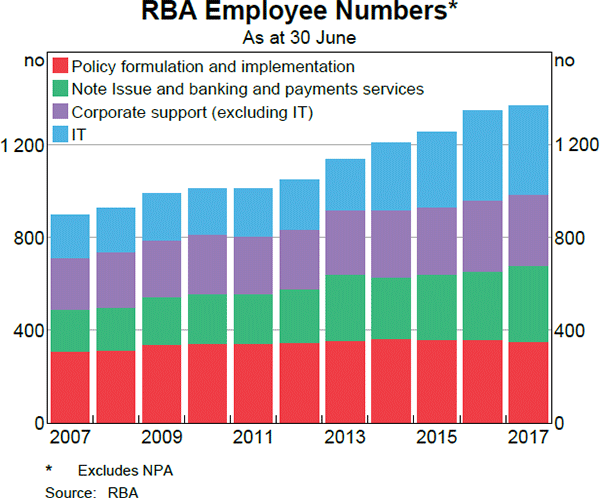

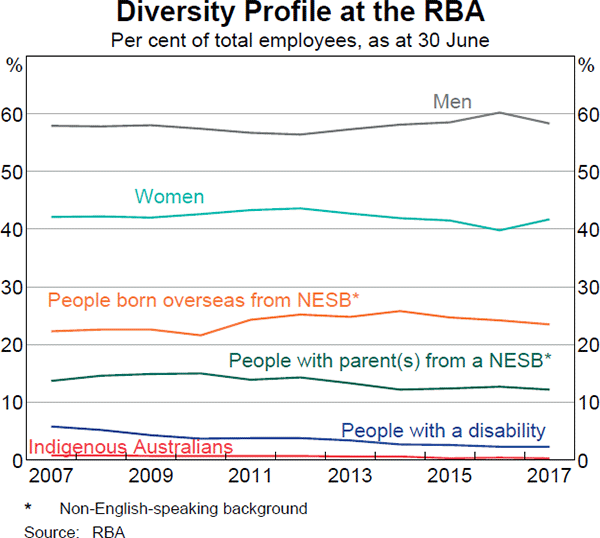
The average age of Reserve Bank employees is 39 years, with two-fifths of employees under the age of 35. This reflects the Bank's strong focus on early career hires each year through its graduate, internship and traineeship programs. The median tenure of employees is five years. During 2016/17, around 13 per cent of employees left the Bank. Resignations and retirements accounted for more than half of these exits. Contract expiration accounted for one-third of exits, given the high level of project-related work under way.
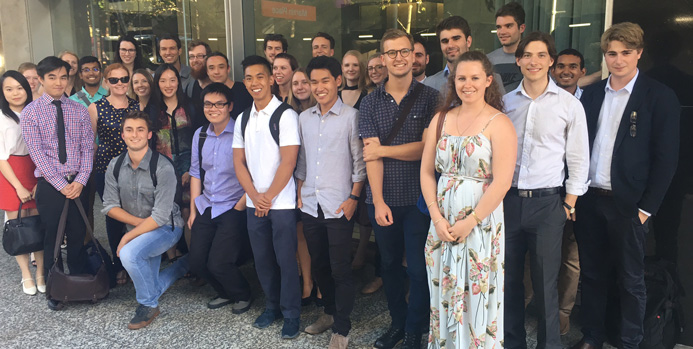
People and Culture
The Reserve Bank's core values, as set out in its Code of Conduct, help shape the Bank's culture and guide expectations and standards around workplace behaviour and professional conduct. The Bank's values are as follows.
1. Promotion of the public interest
We serve the public interest. We ensure that our efforts are directed to this objective, and not to serving our own interests or the interests of any other person or group.
2. Integrity
We are honest in our dealings with others within and outside the Bank. We are open and clear in our dealings with our colleagues. We take appropriate action if we are aware of others who are not acting properly.
3. Excellence
We strive for technical and professional excellence.
4. Intelligent inquiry
We think carefully about the work we do and how we undertake it. We encourage debate, ask questions and speak up when we have concerns.
5. Respect
We treat one another with respect and courtesy. We value one another's views and contributions.
The Reserve Bank maintained a strong focus on its multi-year People and Culture Strategy, as it transitioned to a new senior executive team in 2016/17, led by Philip Lowe as Governor and Guy Debelle as Deputy Governor. The People and Culture Strategy continued to seek to:
- identify aspects of the Bank's culture and work environment that are strengths, as well as areas that need improvement, and measure progress in making improvements
- develop a deep and diverse pool of well-trained potential leaders
- fully utilise the talents of the Bank's people
- foster an inclusive and flexible work environment.
To support the first objective of the People and Culture Strategy, Reserve Bank staff continued to be involved in the implementation of departmental and organisation-wide employee engagement survey action plans in 2016/17. The Governor also commenced holding ‘Town Hall’ meetings, which periodically bring together all staff to discuss the Bank's strengths and opportunities, as well as other organisational matters.

The Reserve Bank continued its focus on leadership development, talent management and diversity and inclusion during the year in review. The Bank's senior leaders completed an Executive Leadership Development Program and a new Empowering Leaders Development Program was introduced for the next cohort of future leaders.
The People and Culture Strategy also places emphasis on ensuring that the talents of employees are being fully utilised and developed. On-the-job development opportunities are supplemented by formal training and professional development programs, including:
- the eight-week Internship Program, which provides high-performing university students work experience and training through the completion of an applied research project. This program is an important source of early career professionals for the Reserve Bank's Graduate Development Program. In 2016/17, 22 interns joined the Bank
- the two-year Graduate Development Program, consisting of a range of tailored training programs to develop policymaking frameworks, effective business writing, critical thinking, presentation, communication and negotiation skills. A total of 61 graduates participated in the 2016/17 programs
- training as required in technical, management and leadership skills, resilience and other general competencies, such as communication skills
- regular training in the Bank's compliance obligations, including in relation to work health and safety, fraud awareness and anti-money laundering/counter-terrorism financing.
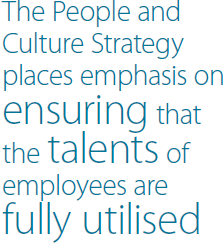
Development opportunities are provided to employees by facilitating internal rotation programs between different areas of the Reserve Bank and external secondments. In 2016/17, the breadth of secondment activities increased, involving a wider range of Australian and international institutions, including the Commonwealth Department of the Prime Minister and Cabinet, the Australian Treasury, the Australian Bureau of Statistics, the Australian Competition and Consumer Commission, the Australian Prudential Regulation Authority, the Bank of England, the Bank for International Settlements, the Reserve Bank of New Zealand, the Federal Reserve, the International Monetary Fund and the Organisation for Economic Co-operation and Development. The Bank also hosts secondees from external institutions to foster corporate networks and share understanding of best practice.
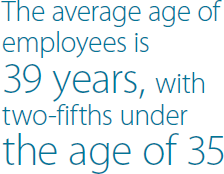
The Reserve Bank encourages employees to develop their skills continually, and provides financial support to employees for part-time study in disciplines related to their work, with 67 employees benefiting from this support during 2016/17. In addition, the Bank provided support to seven employees undertaking full-time postgraduate study at universities in Australia and overseas during this period.
The Reserve Bank recognises staff achievements through its Outstanding Achievement Awards program, which emphasises the principles of non-financial rewards and recognition.
The People and Culture Strategy also actively promotes an inclusive work environment. The Reserve Bank launched a suite of Employee Resource Groups (ERGs), which involve over 130 employees working together on issues related to accessibility, flexibility, gender equity, Indigenous Australians, LGBTI, and race and cultural identity. These groups work closely with the Bank's Diversity and Inclusion Council to establish and implement activities and practices that support the Bank's Diversity and Inclusion Plan and contribute to an inclusive and flexible workplace environment for all employees.

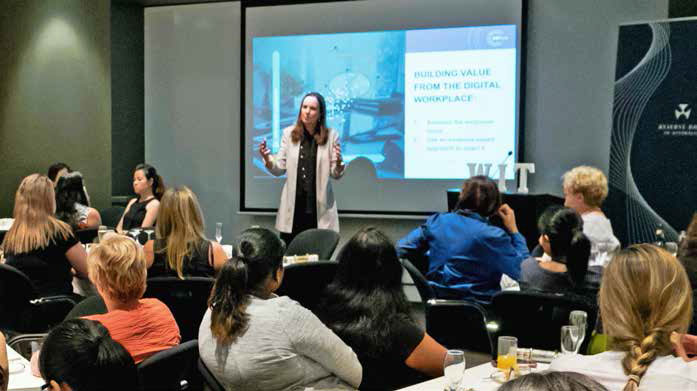
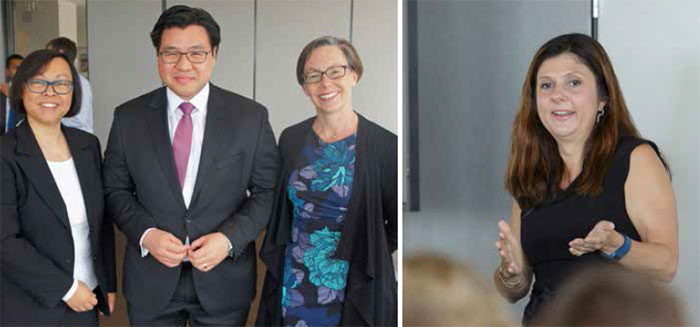
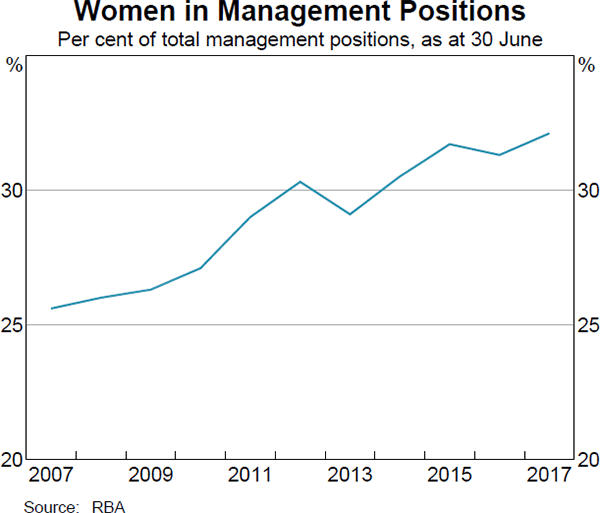
The Reserve Bank continues to support flexible work practices, including part-time work and job-share arrangements. The Bank also enables flexible ways of working full time, by supporting changes in work patterns or location, including altering start or finish times, working compressed work weeks or from home or another location. About 36 employees commenced a flexible work arrangement in 2016/17.
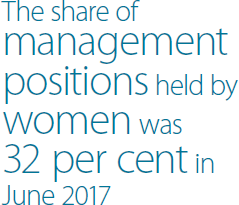
During 2016/17, further progress was made towards increasing the representation of women in management at the Reserve Bank, with the share of management positions held by women increasing to 32 per cent in June 2017, 1 percentage point higher than a year earlier. The Bank has a gender target of 35 per cent of management positions to be filled by women by 2020, with a longer-term aim of 50 per cent. In support of the gender target, there is a strong focus on talent management at the Bank, including succession and development planning for both women and men, and measures to ensure diversity of candidates in all selection processes.
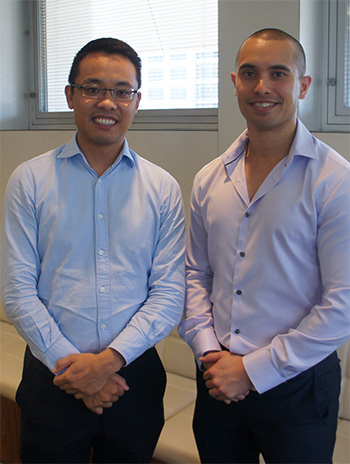
The Reserve Bank actively works to promote economics, finance, mathematics and IT as career options for women. The Bank established a dedicated Public Access & Education team to expand the Bank's provision of learning experiences and information to schools, universities and educators about the economy and the role of Australia's central bank (see the chapter on ‘Community Engagement’). The Bank also launched an annual scholarship for teachers in 2016 to help promote and support the study of economics in schools, particularly by females. The first scholarship recipient worked closely with the Bank during the year in review on a research project examining factors that may encourage the participation of female students in economics at secondary and tertiary levels. A new scholarship will be awarded to a teacher in August 2017.
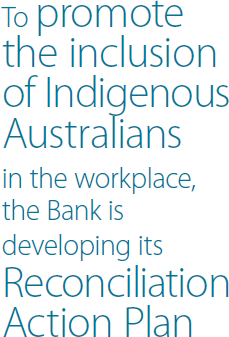
To promote the inclusion of Indigenous Australians in the workplace, during the year the Reserve Bank established a Reconciliation Action Plan (RAP) Working Group, which is developing the Bank's first RAP. The Bank-funded internship for Indigenous Australian university students was also expanded from one to four recipients in 2016/17, with one of the interns continuing in employment at the Bank. The internship was facilitated by Career Trackers, a not-for-profit agency that works with organisations to provide work experience, networking and professional development opportunities for Indigenous Australian university students. The internship involved vacation work at the Bank as well as professional development training. The Bank also welcomed two tertiary students with a disability through the Australian Network on Disability's ‘Stepping Into’ internship program and continues to provide long-term employment for individuals with intellectual disabilities through the Job Support program.
The Reserve Bank raised employees' awareness and involvement in diversity and work health and safety matters by supporting participation in external events and hosting guests at the Bank to speak on diversity, inclusion and health-related topics. Diversity events included speakers on gender and race matters, along with celebrations to mark NAIDOC week, Reconciliation Week, Harmony Day, Wear It Purple Day, International Women's Day and Global Accessibility Awareness Day. In addition, the Bank continued to raise awareness about mental health in the workplace, including through R U OK?Day activities. The Bank also developed a mental health strategy to support the prevention of workplace mental health issues, to be implemented in 2017/18, and provided training and advice to employees on mental health and resilience.

Remuneration
The remuneration packages for Reserve Bank employees are designed to attract and engage high-calibre people. In line with the Bank's commitment to openness and transparency, the distribution of remuneration paid to Bank executives and other senior employees is set out on page 104.
The Reserve Bank negotiated a new three-year Workplace Agreement for the period commencing 3 July 2017, which provides for a performance-based salary increase distributed from a pool equivalent to 2 per cent of salaries. As in the past, the new agreement makes available a moderate additional lump-sum performance-based payment. The salary increases are in line with the previous agreement. The agreement maintained the increase of hours in the standard work week for all employees introduced in 2016 and accommodates contemporary practices for shift work to support 24/7 operations.
During 2016/17, the Reserve Bank and the Officers' Superannuation Fund (OSF) Trustees completed the successor fund transfer of the Reserve Bank superannuation fund, the OSF, to RB Super, which is a corporate sub-plan within Sunsuper. The decision to do this was made to ensure that the increasing regulatory and governance requirements for superannuation funds are best able to be met. After a competitive selection process, Sunsuper was appointed to be the successor fund for the OSF in mid 2016, and the transition was completed on 21 March 2017.
| Remuneration band | Number | Reportable salary1 | Superannuation2 | Lump sum3 | Total |
|---|---|---|---|---|---|
| $0 to $200,000 | 1 | 145,026 | 23,831 | 3,911 | 172,768 |
| $225,001 to $250,000 | 1 | 195,174 | 32,309 | – | 227,483 |
| $250,001 to $275,000 | 1 | 233,932 | 37,062 | 3,873 | 274,867 |
| $275,001 to $300,000 | 1 | 252,613 | 42,306 | 4,581 | 299,500 |
| $300,001 to $325,000 | 10 | 264,972 | 43,955 | 3,915 | 312,842 |
| $325,001 to $350,000 | 8 | 282,925 | 44,671 | 5,734 | 333,330 |
| $350,001 to $375,000 | 3 | 297,980 | 50,212 | 5,482 | 353,674 |
| $375,001 to $400,000 | 4 | 324,329 | 53,979 | 6,371 | 384,679 |
| $400,001 to $425,000 | 1 | 354,094 | 60,412 | 6,739 | 421,245 |
| $425,001 to $450,000 | 1 | 358,026 | 62,258 | 8,149 | 428,433 |
| $450,001 to $475,000 | 2 | 388,668 | 66,900 | 5,725 | 461,293 |
| $475,001 to $500,000 | 3 | 409,973 | 71,047 | 7,176 | 488,196 |
| $500,001 to $525,000 | 3 | 435,315 | 62,850 | 9,860 | 508,025 |
| $525,001 to $550,000 | 2 | 448,224 | 77,665 | 7,985 | 533,874 |
| $550,001 to $575,000 | 1 | 465,989 | 78,912 | 8,364 | 553,265 |
| $575,001 to $600,000 | 1 | 500,594 | 87,765 | 9,325 | 597,684 |
| $600,001 to $625,000 | 1 | 506,803 | 88,827 | 9,438 | 605,068 |
| $675,001 to $700,000 | 1 | 562,356 | 102,083 | 10,689 | 675,128 |
| $725,001 to $750,000 | 1 | 631,623 | 98,736 | 9,897 | 740,256 |
| $925,001 to $950,000 | 1 | 802,222 | 128,440 | – | 930,662 |
| Total | 47 | ||||
|
(a) Includes total remuneration earned in Australia during the reporting period by executives at desk (or on parental or annual leave) as at 1 July 2017; each row shows an average figure based on the number of employees within each remuneration band based on total remuneration earned; an executive for the purpose of this table is anyone holding a position of Deputy Head of Department (or equivalent) or above; see the numbered footnotes in the table below Source: RBA |
|||||
| Remuneration band | Number | Reportable salary1 | Superannuation2 | Lump sum3 | Total |
|---|---|---|---|---|---|
| $200,001 to $225,000 | 55 | 177,468 | 30,226 | 3,295 | 210,989 |
| $225,001 to $250,000 | 39 | 199,858 | 33,537 | 3,749 | 237,144 |
| $250,001 to $275,000 | 16 | 219,770 | 37,382 | 4,480 | 261,632 |
| $275,001 to $300,000 | 5 | 247,894 | 39,042 | 5,168 | 292,104 |
| Total | 115 | ||||
|
(a) Includes total remuneration earned in Australia during the reporting period by other senior employees at desk (or on parental or annual leave) as at 1 July 2017; each row shows an average figure based on the number of employees within each remuneration band based on total remuneration earned Source: RBA Notes (1) The ‘reportable salary’ column is prepared
on a cash basis using reportable salary, defined as the sum of gross
payments (excluding lump sum payments); reportable fringe benefits (net
amount); reportable employer superannuation contributions; and exempt
foreign employment income, as reported in an individual's payment
summary. |
|||||